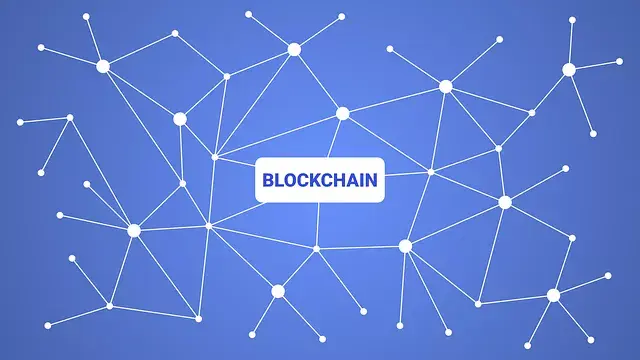Blockchain Interconnection
- alan.techkriti
- Mar 31, 2023
- 3 min read
Blockchain interconnection is the process of connecting several blockchain networks to one another to allow users, stakeholders, and decentralised applications (dApps) to communicate and share data.
It promotes interoperability by allowing blockchain networks built on various blockchain platforms to communicate with one another in a safe and standardized way.
While addressing the shortcomings of the current one-chain-per-application model of blockchain, which restricts data sharing between various decentralized networks, blockchain
interconnection builds on the principles of a decentralized infrastructure and trustworthy, tamper-proof transaction records.

The current state of blockchain networks is still fragmented, despite the fact that blockchain was intended to function as a distributed and decentralized platform.
Interconnected exchanges between separate networks provide various advantages, such as enhanced data sharing and smooth cross-chain transactions. Additionally, linkages provide
blockchains the ability to collaborate more adaptably, opening up the prospect of carrying out new transactions across borders and developing new business models.
The most popular blockchain interconnection technique is Cross-Chain, which aims to connect several blockchain networks.Using established protocols and decentralized applications, cross-chain technology enables dissimilar blockchain networks to connect with one another, promoting trust and automated transactions between various chains.
Blockchain interconnection can be made possible by a variety of techniques and technology. Here are a few common techniques:
Atomic Swaps: Without the use of a middleman, atomic swaps enable the direct exchange of cryptocurrencies between two parties on several blockchains. Atomic swaps are carried out via smart contracts, which, when their respective conditions are satisfied, carry out numerous transactions.
Sidechains: Using a two-way peg, sidechains allow data and assets to be transferred between two blockchains. Transactions between two distinct digital currencies are made easier by a two-way peg, which enables the two blockchain networks to "trust" one another.
Cross-Chain Smart Contracts: These contracts provide security for automated exchanges between various blockchain networks. These contracts give blockchain the ability to validate
transactions, guaranteeing that they haven't been tampered with and that each participant has a valid digital signature proving their identity.
Bridge Networks: Bridge networks are a type of third-party service provider that aids in connecting two blockchains and enables cross-network transactions. Bridge networks are less frequently utilised than the methods mentioned above since they typically demand the trust of the parties involved and may introduce a point of failure.
Examples of blockchain interconnection technologies:
Cosmos: Cosmos is an open-source project that attempts to make it possible for blockchain networks to communicate with one another. It uses the IBC protocol to let dApps and smart
contracts communicate with one another across several chains.
Polkadot: An open-source project called Polkadot offers a scalable and adaptable platform for decentralised apps. It enables effective resource sharing, makes token and data transfers between chains easier, and more.
Hyperledger: The open-source blockchain technology known as Hyperledger intends to encourage interoperability between different blockchain networks.
It has a cutting-edge infrastructure that facilitates smart contract execution and offers safe data management.
Decentralized networks can cooperate and conduct business with one another in a secure and open manner thanks to blockchain interconnection. In order to build an ecosystem of
interoperability and enable enhanced efficiency and scalability of the blockchain across various networks, connecting between various blockchain networks is crucial.
As blockchain technology develops and becomes more widely used in business, the adoption of blockchain connectivity will progress.
How blockchain interconnection is useful?
Easy Cross-Chain Transactions: Because to blockchain interoperability, users may now conduct transactions smoothly across several blockchains. Blockchain-based applications grow
Increased Security: By allowing the sharing of data and resources like hashing power, which can fortify the blockchain's defences against potential assaults, interconnection across blockchains boosts security on each network.
Better Asset and Data Exchange: Blockchain interconnection enables the transfer of data and assets between various blockchain networks, enabling users to conduct transactions and exchange data between chains in a secure and open manner.
Increased Scalability: By introducing connectivity across blockchains, the throughput and scalability of transaction processing can be increased, improving the efficiency of the overall blockchain ecosystem.
Better Collaboration: Interconnecting blockchains brings together diverse communities and enables them to interact, exchange resources, put standards into place, share knowledge, and support one another in driving blockchain adoption.
More Flexibility: Users have more options when selecting applications and platforms to carry out their transactions thanks to interoperability brought about by blockchain interconnection. Its adaptability makes blockchain solutions more long-lasting in the long run, giving customers more alternatives and making blockchain applications more user-friendly and transactions between different chains become considerably simpler, offering a major convenience.
Decentralized networks can cooperate and conduct business with one another in a secure and open manner thanks to blockchain interconnection.In order to build an ecosystem of interoperability and enable enhanced efficiency and scalability of the blockchain across various networks, connecting between various blockchain networks is crucial.
As blockchain technology develops and becomes more widely used in business, the adoption of blockchain interconnection will progress.











Comments